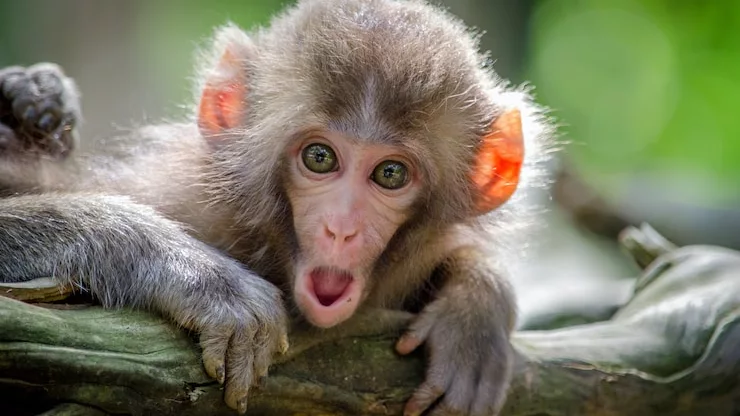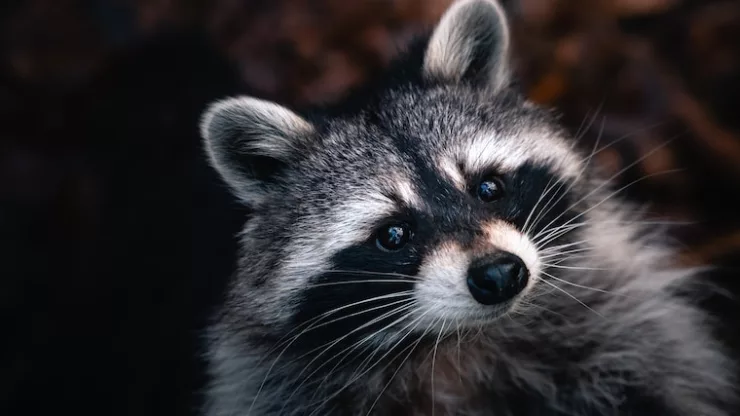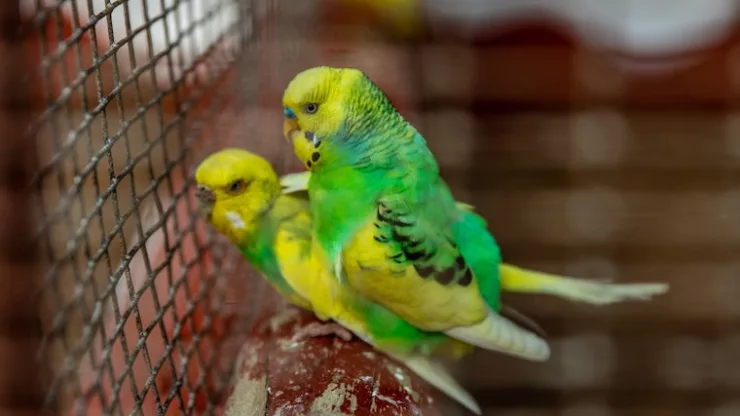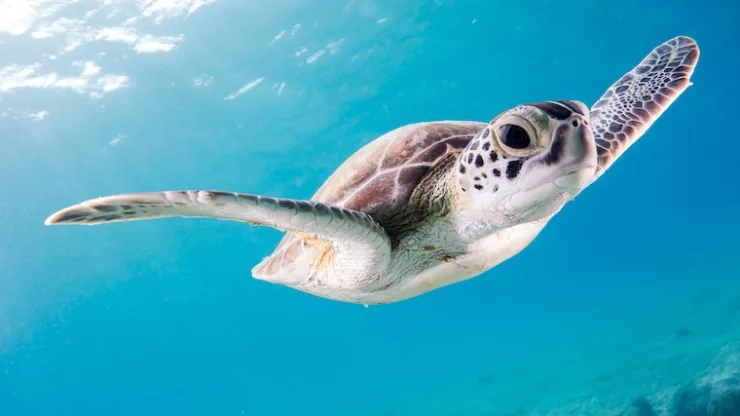Monkeys are fascinating creatures that have been a subject of wonder and curiosity for humans for centuries.
These primates are known for their intelligence, social behavior, and unique physical characteristics.
In this article, we’ll explore some fun and interesting facts about monkeys that will leave you amazed.
Fun Facts About Monkeys
- Monkeys are Primates: Monkeys, like humans, belong to the primate family. Primates are characterized by their opposable thumbs, forward-facing eyes, and complex brains. Monkeys are further classified into two groups: Old World monkeys and New World monkeys.
- Monkeys Come in Different Shapes and Sizes: Monkeys come in various shapes and sizes, from the tiny pygmy marmoset to the large mandrill. Some monkeys, like the howler monkey, have a distinctive loud vocalization, while others, like the spider monkey, have long prehensile tails that they use for grasping branches and hanging from trees.
- Monkeys Love to Socialize: Monkeys are highly social animals that live in groups called troops. These troops can range from a few individuals to several hundred monkeys. Within the troop, monkeys have a complex social hierarchy, with dominant males holding the highest status.
- Monkeys Are Intelligent: Monkeys are known for their intelligence and problem-solving skills. They have been observed using tools in the wild, such as using sticks to probe for insects or using rocks to crack open nuts. In captivity, monkeys have been trained to perform a variety of tasks, including sign language and using computers.
- Monkeys Are Omnivores: Monkeys are omnivores, meaning they eat both plants and animals. Their diet can vary depending on their species and habitat. Some monkeys, like the howler monkey, mainly eat leaves and fruits, while others, like the macaque, eat a wider variety of foods, including insects, eggs, and small mammals.
- Monkeys Have Unique Physical Characteristics: Monkeys have several unique physical characteristics that set them apart from other animals. These include opposable thumbs, a prehensile tail, and forward-facing eyes. Some monkeys, like the mandrill, have brightly colored faces and bodies, while others, like the proboscis monkey, have long, distinctive noses.
- Monkeys Are Endangered: Many monkey species are endangered due to habitat loss, hunting, and the illegal pet trade. It’s important to protect these animals and their habitats to ensure their survival.
- Primates Include Monkeys: Like humans, monkeys are part of the primate family, recognized by their opposable thumbs, forward-facing eyes, and intricate brains. They’re divided into two main categories: Old World monkeys and New World monkeys.
- Monkeys Exhibit Diverse Forms and Features: Monkeys display an extensive range of forms and sizes, from the petite pygmy marmoset to the imposing mandrill. Unique attributes are present across species, such as the howler monkey’s resonant calls, or the spider monkey’s lengthy prehensile tail used for clutching branches and swinging.
- Social Creatures by Nature, Monkeys Love Company: Monkeys are inherently social creatures residing in groups known as troops, which can range from just a few members to several hundreds. Within each troop, there exists a sophisticated social hierarchy, with alpha males typically occupying the top rank.
- Intelligent and Innovative, Monkeys are Problem-Solvers: Acknowledged for their intellect and problem-solving capabilities, monkeys have been seen using tools in the wild. Examples include utilizing sticks to extract insects or employing rocks to break open nuts. In controlled environments, monkeys have been taught to perform diverse tasks, ranging from sign language to computer use.
- Monkeys Follow an Omnivorous Diet: As omnivores, monkeys consume both plants and animals. Their diet may differ based on their species and habitat. Some like the howler monkey primarily feast on leaves and fruits, whereas others like the macaque indulge in a more varied diet, including insects, eggs, and small mammals.
- Distinct Physical Traits Define Monkeys: Monkeys possess distinct physical attributes that distinguish them from other creatures. These include opposable thumbs, a grasping tail, and forward-facing eyes. Certain monkeys like the mandrill exhibit vibrant facial and body colors, whereas others like the proboscis monkey bear elongated, striking noses.
- Protect Our Endangered Monkeys: Numerous monkey species are under threat due to habitat destruction, hunting, and unlawful pet trading. Protecting these creatures and their habitats is crucial for their continued survival.
Intriguing Facts About Various Monkey Species
| Species | Fun Fact |
|---|---|
| Capuchin Monkey | Capuchin monkeys are tool users. They are known to use stones as hammers to crack open nuts. |
| Squirrel Monkey | These tiny primates have a brain-to-body mass ratio greater than humans, making them the largest of any primate. |
| Howler Monkey | They are the loudest animals in the New World. Their calls can be heard from 3 miles away. |
| Spider Monkey | Spider monkeys have a prehensile tail, which they use as a fifth limb. It can carry their entire body weight and even pick up small objects. |
| Mandrill | Mandrills are the most colorful primates. They have a distinctive blue and red coloration on their faces. |
| Rhesus Macaque | Rhesus Macaques were the first primates in space. A rhesus macaque named Sam was sent to space by NASA in 1959, before humans. |
| Proboscis Monkey | Proboscis monkeys have the longest noses of any primate. Males’ noses can reach up to 7 inches long! |
| Golden Lion Tamarin | Golden Lion Tamarins are among the most endangered monkeys. Their entire global population lives within a small area in Brazil. However, conservation efforts have helped their population increase. |
| Japanese Macaque | Also known as Snow Monkeys, these primates live further north than any other non-human primate, surviving winter temperatures below -15 °C (5 °F). They are known to warm up in hot springs. |
| Gelada | Unlike any other primates, geladas spend most of their time on the ground. They’re the only grass-eating monkeys and are also known for their impressive ‘bleeding heart’ chest markings. |
| Tarsier | Tarsiers have the largest eyes relative to body size of all mammals. Each eyeball is approximately the same size as its brain! |
| Pygmy Marmoset | As the world’s smallest monkey, Pygmy Marmosets are so small they can fit in a human hand. They also have a unique way of feeding – they drill holes in tree trunks to lap up the sap inside. |
Conclusion
Monkeys are captivating animals that have captured the imagination of humans for centuries.
By learning more about these amazing animals, we can better appreciate and protect them for generations to come.
This comprehensive guide aims to provide a deep understanding of monkeys, their behavior, characteristics, and the challenges they face.
It is our hope that this knowledge will inspire a greater appreciation for these remarkable creatures and encourage efforts to protect their habitats and ensure their survival.
FAQ
How many species of monkeys are there?
There are over 260 species of monkeys in the world.
Do monkeys make good pets?
No, monkeys do not make good pets. They require specialized care and can become aggressive as they grow older.
Can monkeys swim?
Yes, many monkey species are able to swim.
What is the smallest monkey in the world?
The pygmy marmoset is the smallest monkey in the world, weighing only 4-5 ounces.
Are monkeys dangerous?
Some monkey species can be dangerous, especially if they feel threatened or if they are being territorial.
It’s important to keep a safe distance from wild monkeys and to respect their space.

I am a fun fact enthusiast and creator of Facts On Tap.
I love to share my knowledge and curiosity with readers and inspire them to learn something new every day.
When I’m not writing, I enjoy traveling, reading, and playing trivia games with my friends.




